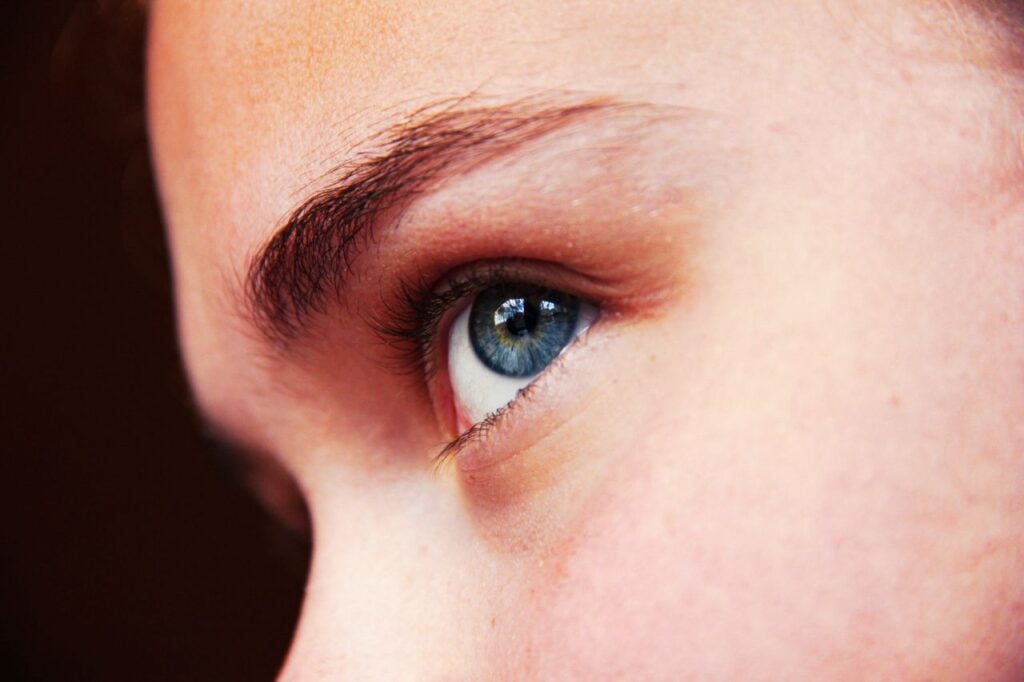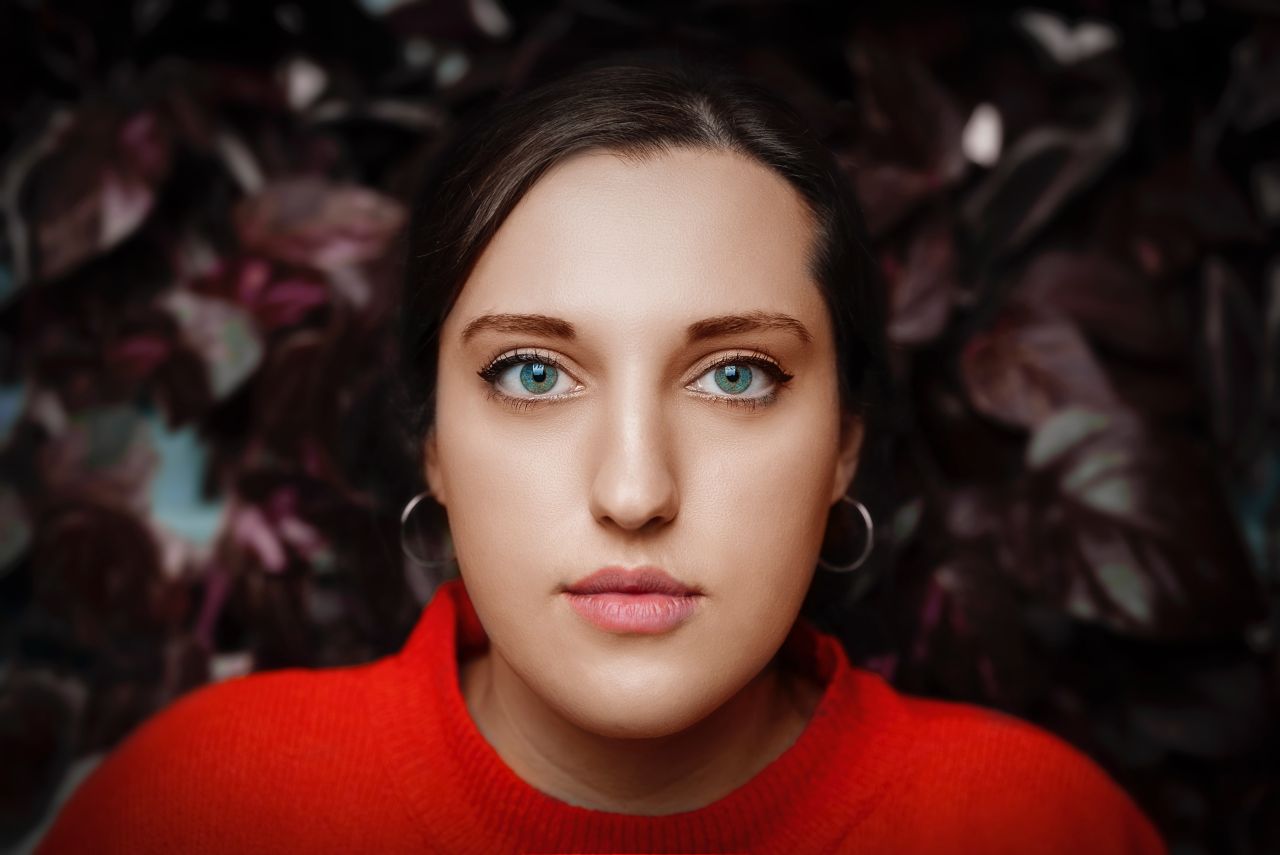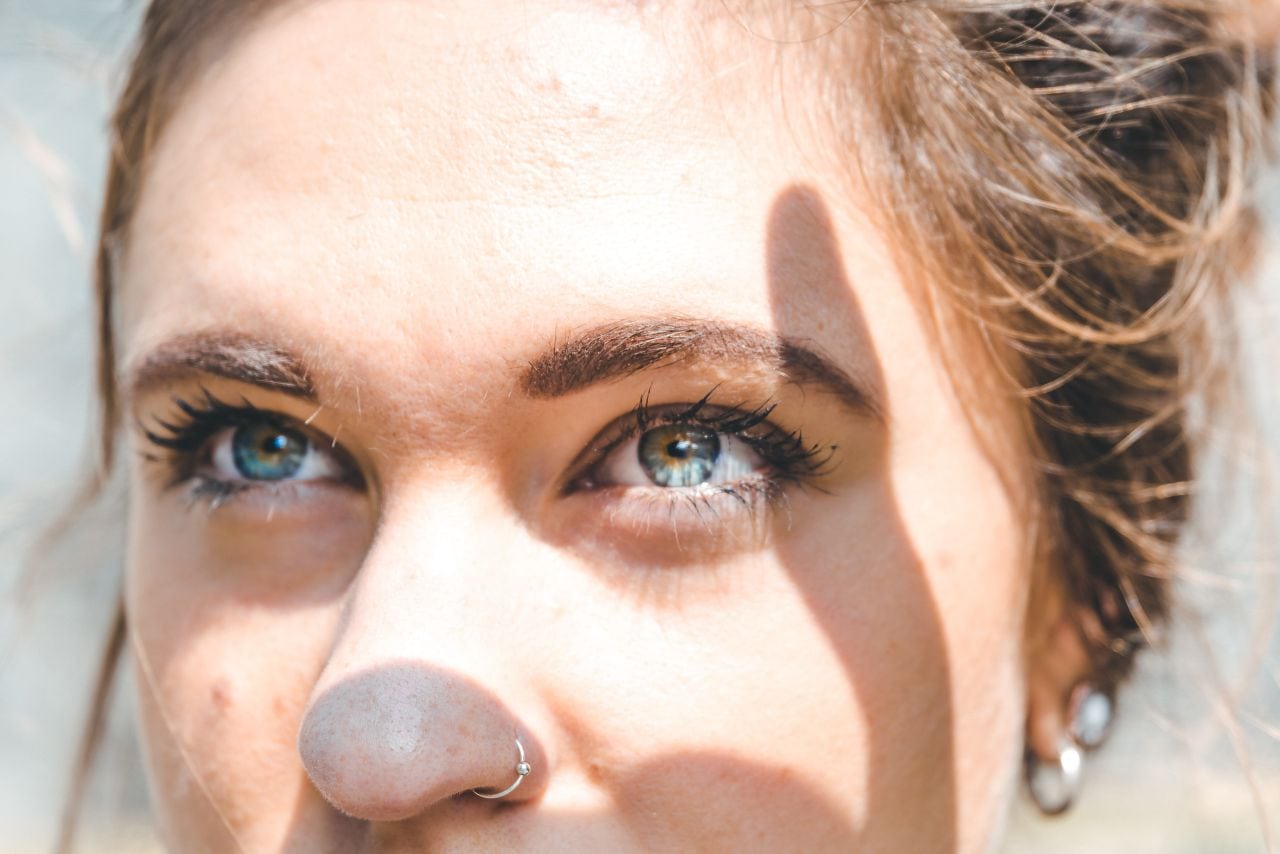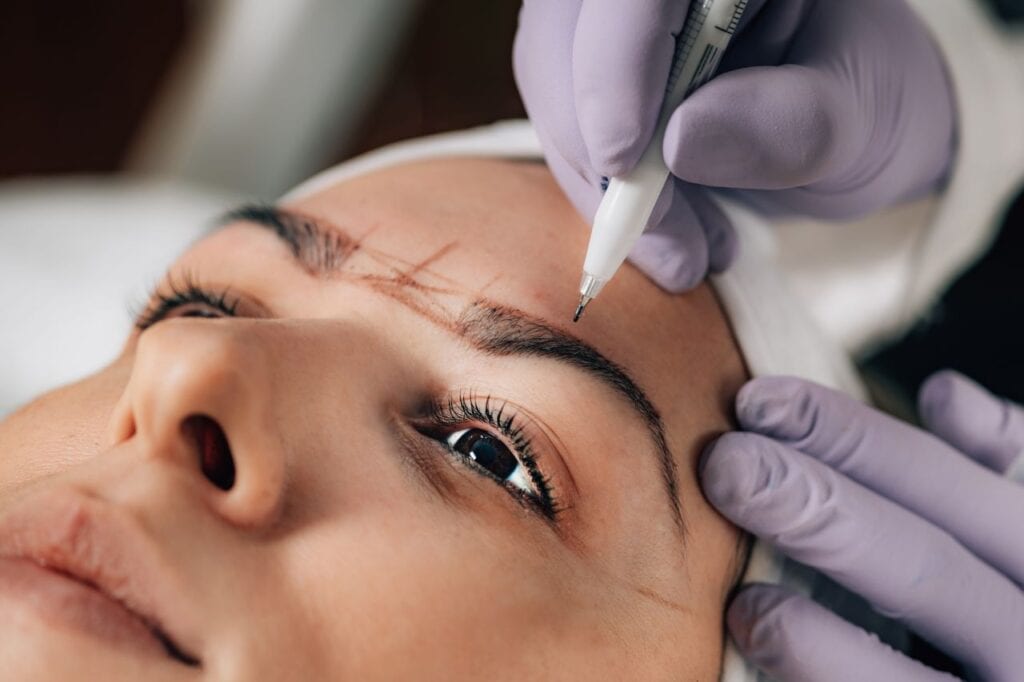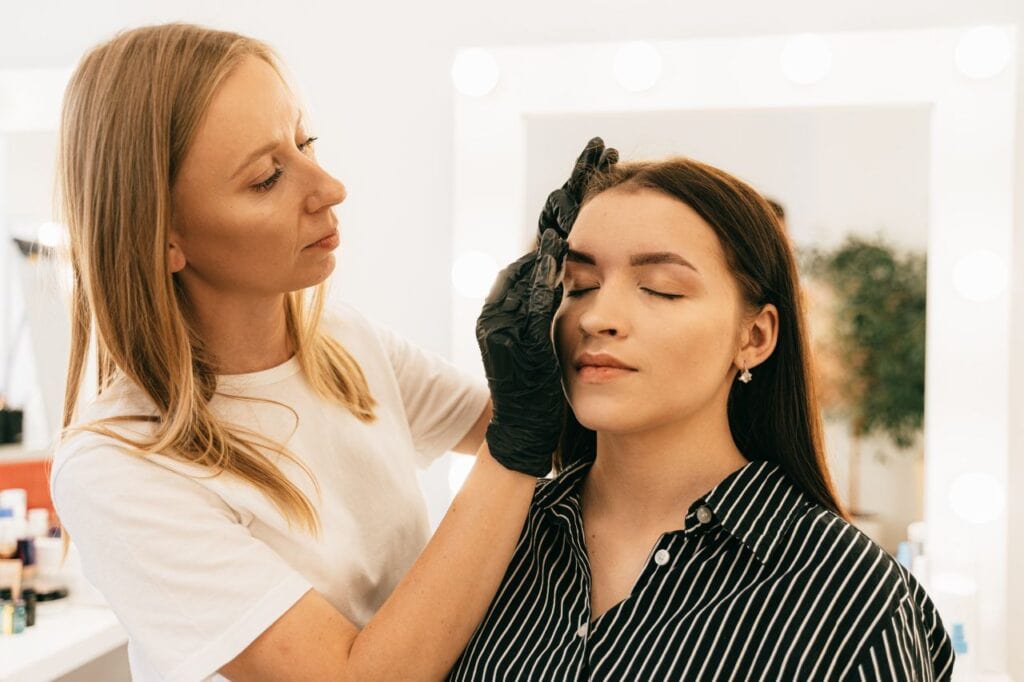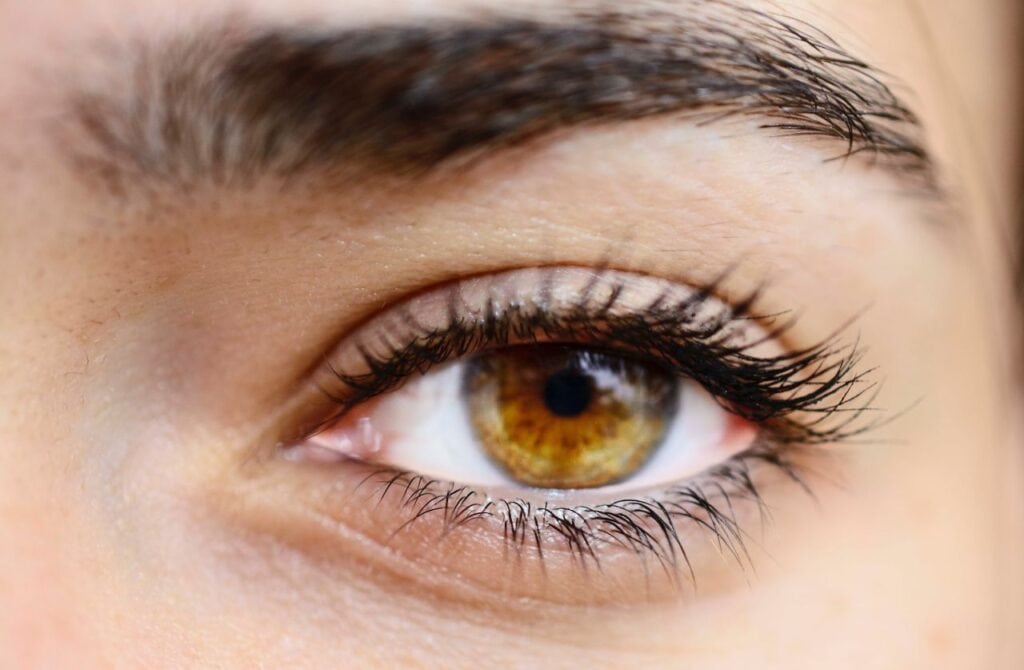Do you want to improve the look of your eyebrows by shaping them to perfection? Microblading is here to replace your trusty old eyebrow pencil. This new method of strengthening eyebrows, which yields semipermanent results that can last up to two years while still looking natural, is swiftly rising to the top of the beauty care trends list.
Microblading seems to be all the rage these days, but what is it, and how does it differ from other methods of eyebrow enhancement? This essay will discuss these and more as we examine the various microblading techniques currently in use. If you're interested in learning how this new therapy might alter the appearance of your eyebrows, keep reading! Looking for a microblading salon? Look no further,Cosmetic Tattoo by Rach got you covered .
What Is Microblading?
According to research published and made available by the National Library of Medicine, microblading is a permanent cosmetics technique used to repair eyebrows. It is a manual micropigmentation in which the ink is deposited on the papillary dermis.
When compared to conventional eyebrow tattooing, microblading is light years ahead. The conventional method has an artificial appearance and turns a greenish blue over time.
Unfortunately, microblading is only a short-term solution, with most people seeing results that fade after a year or two. To keep the results of this operation lasting, consider having touch-ups done periodically.
Different Types Of Microblading
These are the things that you need to know in order to have a better understanding of the various forms of microblading.
Microshading
To improve the appearance of your brows, microshading is your best bet if you sweat profusely.
The techniques employed in microblading and shading are the primary distinctions. The aesthetician will make tiny, precise hair strokes in microblading.
Microshading, on the other hand, entails the expert continuously dotting the brow area with small, pinpoint dots. Because of this, the pigment has a better chance of sticking to naturally oily or sweaty skin.
The following are examples of widely used forms of microshading:
- Ombre brows
Ombre microblading and shading are your best bet if you want to get brows that look drawn on with a gradient, powder-like texture achieved with makeup. Light to dark gradations characterise ombre powder microshading. Your skin type doesn't matter; we'll accept those with oily, dry, or mixed skin.
- Combination brows
It is necessary to undergo microblading and shading to attain the same results as the previous two eyebrow treatments.
One benefit of this method is that it can be used in conjunction with other treatments to provide the impression of fuller, more thick brows. That way, your brows will still look natural but with a touch of makeup.
Micropigmentation
Micropigmentation is a form of early eye tattooing that involves manually drawing on eyebrows using a digital pen equipped with needles. This technique comes before microblading and is, therefore, a prerequisite.
The first results from these treatments looked like someone had drawn a black Sharpie marker on their brows. Micropigmentation permanently implants the ink beneath the skin and outlasts microblading by two to five years.
Digital Blading
Make sure your brow expert uses the digital blading method if you want your microblading treatment to stay longer. This method involves infusing colours in thin strokes to resemble individual brow hairs. Your brow augmentation will be completely undetectable.
Experts implant the pigments into the dermis layer of the skin so that the larger brows can last up to 2.5 years. If you want fuller, longer-lasting brows than you can get with any other microblading procedure, digital blading is the way to go.
Powder Brows
There are many ways in which powder brows are distinct from microblading. The first difference is that rather than a manual blade, a small tattoo needle is used to apply permanent makeup. A powder brow method also requires less time for recovery because it is less intrusive to the skin.
Powder brows, because of the shorter durability of vegan ink compared to microblading ink, should be expected to endure for around nine months. Microblading isn't a good option for people with oily or acne-prone skin, although eyebrows made of powder are OK. A radically new aesthetic has been achieved. Whether you get your brows microbladed or filled in with powder, you'll get the expected defined look.
Nano Blading
Manual microblading, performed with a very fine blade, has become popular in the past year or two. Artists commonly employed blades with diameters of 0.20 to 0.22 mm. However, several new-use micro blades have a diameter of only 0.18 mm. This may not mean much to you, but it gives you an idea of how little these blades are.
Is it a no-brainer? True, the jargon used by those who specialise in permanent cosmetics can take time to decipher. For example, according to some practitioners, Nano Blading is simply microblading performed with a nanoblade; however, others use the term to describe a specific type of machine hair stroke technique, more on later.
Microblading and nano-blading are both forms of microblading. However, nano blades are much smaller and produce thinner strokes, making it difficult for the untrained eye to discern between them. As a result, the pigment is less likely to spread, and the brows appear softer and fluffier.
Pixel Blading
The "wispy" blade used in this manual microblading procedure is used to poke the skin in the brow area to create the appearance of hair strokes. Microblading techniques are not used here, such as dragging the blade into the treatment area.
In pixel blading, the pigment is tapped into the skin rather than injected. Thus brow artists say it's a more delicate procedure than standard microblading.
Nevertheless, only some experts in the field of brow grooming have figured out how to do this. So, if you want your brows to look bigger and more natural while still having a powdered finish, this is the microblading for you.
Digital Microblading, AKA Nano Brows
Hair stroke brows created by a machine are called nano brows. Thin needles at the tip of a permanent makeup gadget travel quickly in and out of the skin to draw designs and implant pigments.
A stroke can be made by drawing these pigment dots close to one another. In addition, the machine allows for pinpoint accuracy, distinguishing it from less precise manual or digital microblading methods.
Pigments applied by machines are reported to remain in the skin for a somewhat longer period of time and to be less traumatic to the skin. Of all the varieties of microblading, nano brows are the greatest option for individuals with oily, mature, or sensitive skin.
Eyebrow Etching
Etching the eyebrows is another method that developed after microblading was perfected. Instead of using very thin blade-like microblading, a small etching tool is used to make superficial scratches. Though the result is more natural-looking than microblading, the pigment may fade more quickly because it isn't implanted so deeply into the skin.
Microshading
The use of microshading is yet another way to improve the appearance of your eyebrows. This technique uses a machine in place of a hand tool to generate a grid of small dots in place of traditional hair strokes. Because it doesn't call for the artist to imitate the client's natural brow, this method is great for those who either need to have brows or are too lazy. Check out our range of eyebrow tattoo services to help with your problems.
Those with glossy skin, oily skin, or excessive perspiration often opt for microshading because the dots help the ink settle into the skin more effectively. To add to that, it's a great choice for people who have hypersensitive skin. In the long run, you may spend less on microshading than microblading because it lasts longer and requires fewer touch-ups.
Why Should You Consider Microblading?
Knowing the difference between microshading and ombre and powder brows and microshading can help you decide if the semi-permanent cosmetic surgery is correct.
If you still require persuasion, consider the following points.
Microblading May Help You Save Money
Pricey eyebrow cosmetics include pencils, fixers, gels, and brushes. Since you'll be using these products on a daily basis, you may end up shelling out a sizable sum to improve the appearance of your brows.
Although microblading might set you back several hundred dollars, it is recommended that you only get it done every two years. Then, you might save money because you won't have to replace your eyebrow makeup constantly.
Microblading Has A Short Recovery Period.
While the microblading recovery time is longer than that of a standard eyebrow tattoo, it involves less effort.
There will be no post-op brow swelling or inflammation to worry about. In addition, you can avoid the embarrassment of bandages while the treated area heals.
When compared to other methods of brow shaping, microblading is also quite painless. Your sole obligation is to adhere to the aftercare instructions given to you by your brow specialist.
Microblading Helps You Save Time.
If you get a microblading treatment, you won't have to spend a long time checking your brows in the mirror. Semi-permanent cosmetics like this can help you keep your brows in the perfect shape and size for up to two years. You will only waste time constantly threading, plucking, or waxing to maintain your appearance. You can have beautifully defined brows for up to two years with any of the several microblading techniques available today.
What Is The Pain Level Of Microblading?
Since the treatment involves breaking the skin, some people may experience discomfort. However, it should only hurt a little more than a light scrape. Perhaps more than the actual treatment itself, the two or more hours of waiting will be a nuisance.
Some bruising and swelling are to be expected after the surgery. When the scabs and wounds heal, you may also experience some stiffness in your forehead. At the end of the first week, you should feel better. The after-care guidelines the salon gives you will speed up the recovery time.
Preparing For Microblading
You should know a few things before getting microblading done. Our exclusive range of eyebrow feathering services will help you in eyebrow microblading, feathering or hair stroke eyebrow tattooing procedures.
These are some of the suggestions:
Tip #1: Get Your Skin Ready
To get the finest results from your microblading procedure, you should wash your face thoroughly before starting. Before visiting the brow salon, you should clean your face well of any oils, debris, and filth. Any dirt or oil accumulated in and around the treatment area could be easily removed using a mild cleanser.
Tip #2: Moisturise The Area
Protect your skin from potential damage during your microblading procedure by properly hydrating beforehand. Using a high-quality moisturiser will act as a shield, protecting your skin from further damage and irritation. For example, to keep the skin around your eyebrows primed and moisturised, you might use a moisturiser that contains petrolatum.
Tip #3: Think About Your Diet
Consuming alcoholic beverages or beverages containing caffeine before the treatment may produce different results. It may create an excessive amount of bleeding, which may have a direct impact on the colour retention of your skin.
FAQs About Microblading
Since the pores open during a microblading procedure, you must avoid getting your face or eyebrow areas wet at least 24 hours after the treatment. If you need to clean your face or shower, you should cover the treated area to prevent it from getting wet. It is also best to dampen the other areas of the face with a wet towel to clean it while avoiding the treated brows.
Since you must always keep the treated brows wet for at least 24 hours after having your chosen microblading type, you should skip your workout schedule a day post-treatment.
Your sweat may affect the outcome of the microblade pigment. So, avoid strenuous workouts or stay away from the sun for at least one day after your schedule with the brow salon.
Your brow specialist would advise you not to sleep on your face, side, or stomach after the microblading procedure. If your face touches the pillows immediately after the treatment, the pigment may get smashed and affect the healing process. Instead, use a travel pillow to force yourself to sleep on your back until the treated areas are completely healed.
If pregnant or nursing, you must delay your microblading procedure until you give birth or after your baby weans. This is because the pigment may affect the child in the long run. It is also essential to get a doctor’s clearance if you are diagnosed with diabetes or any autoimmune disease to prevent complications.
Those undergoing effective treatments like chemotherapy must also have a medical expert’s opinion before pushing through with this aesthetic procedure. People with epilepsy, major heart ailments, eczema, psoriasis, or other skin conditions are also unqualified to get this aesthetic treatment. In addition, you should check with your doctor if you have blood thinner or other medical prescriptions before setting an appointment with a brow salon.
Some people need clarification about the differences between microblading and brow tinting. However, most of the time, they think these procedures are the same.
There are several stark differences between microblading and eyebrow tinting: First, microblading results last longer than tinting. The pigment used in the former can remain on your brows for up to two years, while the longevity of brow tints only lasts for eight weeks.
If you want to get the most out of your money, choose the longer-lasting microblading procedure rather than the brow tinting technique that will fade in a couple of months.
Conclusion
Microblading is a semi-permanent eyebrow restoration process that lasts up to two years without seeming false. Manual micropigmentation on the papillary dermis is innovative compared to eyebrow tattooing. Microblading uses hairstrokes, while shading uses dots. In addition, microshading can improve sweaty brows. Micropigmentation, a forerunner to contemporary eye tattooing, draws eyebrows by hand with a digital pen with needles.
It thickens brows when paired with other procedures. Digital blading gives you bigger, longer-lasting brows than traditional microblading. Powder brows differ from microblading in needle size. Both procedures employ permanent cosmetics. Microblading is not suitable for oily or acne-prone skin, unlike powder eyebrows. Manual microblading—done with a fine blade—has become trendy in the past year.
Microshading uses a machine to make small dots to imitate hair. Professional eyebrow shaping is expensive and should only be done every two years due to the high care required (pencils, fixers, gels, and brushes). Microblading heals slower than eyebrow tattoos, but no post-op brow swelling, or inflammation exists. Microblading is painless, and semi-permanent cosmetics may keep your brows looking excellent for two years. Unfortunately, this requires breaking the skin, which hurts more than a scratch.
Content Summary
- Microblading is here to replace your trusty old eyebrow pencil.
- This new method of strengthening eyebrows, which yields semipermanent results that can last up to two years while still looking natural, is swiftly rising to the top of the beauty care trends list.
- This essay will discuss these and more as we examine the various microblading techniques currently in use.
- If you're interested in learning how this new therapy might alter the appearance of your eyebrows, keep reading!
- According to research published and made available by the National Library of Medicine, microblading is a permanent cosmetics technique used to repair eyebrows.
- When compared to conventional eyebrow tattooing, microblading is light years ahead.
- These are the things that you need to know in order to have a better understanding of the various forms of microblading.
- To improve the appearance of your brows, microshading is your best bet if you sweat profusely.
- The techniques employed in microblading and shading are the primary distinctions.
- The following are examples of widely used forms of microshading: Ombre microblading and shading are your best bet if you want to get brows that look drawn on with a gradient, powder-like texture achieved with makeup.
- Micropigmentation is a form of early eye tattooing that involves manually drawing on eyebrows using a digital pen equipped with needles.
- Make sure your brow expert uses the digital blading method if you want your microblading treatment to stay longer.
- If you want fuller, longer-lasting brows than you can get with any other microblading procedure, digital blading is the way to go.
- There are many ways in which powder brows are distinct from microblading.
- The first difference is that a small tattoo needle is used to apply permanent makeup rather than a manual blade.
- Whether you get your brows microbladed or filled in with powder, you'll get the expected defined look.
- True, the jargon used by those who specialise in permanent cosmetics can take time to decipher.
- Microblading and nano-blading are both forms of microblading.
- However, nano blades are much smaller and produce thinner strokes, making it difficult for the untrained eye to discern between them.
- As a result, the pigment is less likely to spread, and the brows appear softer and fluffier.
- The "wispy" blade used in this manual microblading procedure is used to poke the skin in the brow area to create the appearance of hair strokes.
- Microblading techniques are not used here, such as dragging the blade into the treatment area.
- Thus, brow artists say it's a more delicate procedure than standard microblading.
- Nevertheless, only some experts in the field of brow grooming have figured out how to do this.
- So, if you want your brows to look bigger and more natural while still having a powdered finish, this is the microblading for you.
- Hair stroke brows created by a machine are called nano brows.
- Thin needles at the tip of a permanent makeup gadget travel quickly in and out of the skin to draw designs and implant pigments.
- Of all the varieties of microblading, nano brows are the greatest option for individuals with oily, mature, or sensitive skin.
- The use of microshading is yet another way to improve the appearance of your eyebrows.
- Knowing the difference between microshading and ombre and powder brows and microshading can help you decide if the semi-permanent cosmetic surgery is correct.
- Pricey eyebrow cosmetics include pencils, fixers, gels, and brushes.
- While the microblading recovery time is longer than that of a standard eyebrow tattoo, it involves less effort.
- Your sole obligation is to adhere to the aftercare instructions given to you by your brow specialist.
- If you get a microblading treatment, you won't have to spend a long time checking your brows in the mirror.
- Semi-permanent cosmetics like this can help you keep your brows in the perfect shape and size for up to two years.
- Since the treatment involves breaking the skin, some people may experience discomfort.
- Some bruising and swelling are to be expected after the surgery.
- The after-care guidelines the salon gives you will speed up the recovery time.
- These are some suggestions: To get the finest results from your microblading procedure, you should wash your face thoroughly before starting.
- Protect your skin from potential damage during your microblading procedure by properly hydrating beforehand.
- For example, to keep the skin around your eyebrows primed and moisturised, you might use a moisturiser that contains petrolatum.

